IN PLANS: Żejtun Could Soon Prioritise Pedestrians Over Cars In Landmark Pilot Project

Malta could soon implement serious changes to prioritise pedestrians and cyclists over cars, with a major national project set to kick off in the historic town of Żejtun.
‘Slow Streets’, the name of this initiative, has been in the pipeline for a while.
Transport Minister Ian Borg first hinted at it during Lovin Malta’s show #CovidCalls in March 2020, stating the pandemic gave people a chance to appreciate the beauty of car-free streets.
A few months later, the Local Councils Association formally launched the plan, in collaboration with Transport Malta, with 42 local councils originally signing up.
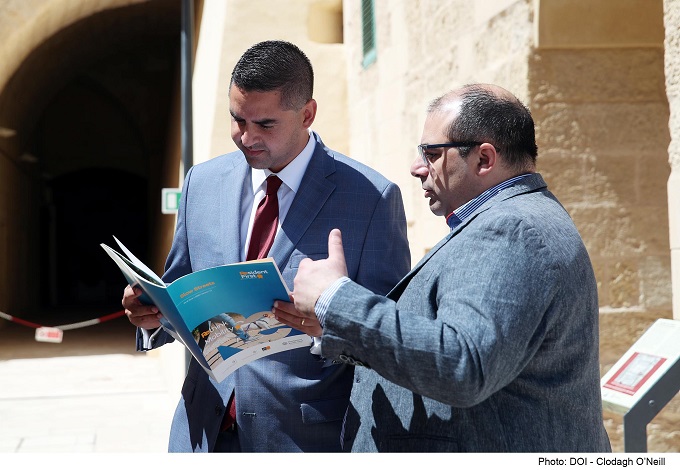
Local Councils Association president Mario Fava (right) showing a Slow Street document to Ian Borg
Since then, intense work has gone on behind the scenes, with the LCA and individual local councils enlisting the likes of urban design firm studjurban and urban designer Tom Van Malderen to help analyse how this project could reasonably be implemented, town by town and street by street.
Researchers carried out both desktop research and on-site “micro-analysis” of the streets, during different days of the week and times of day, to develop detailed plans for each town.
LCA president Mario Fava has told Lovin Malta that Żejtun will be the pilot project of the Slow Street initiative, with its implementation expected to start in matter of weeks.
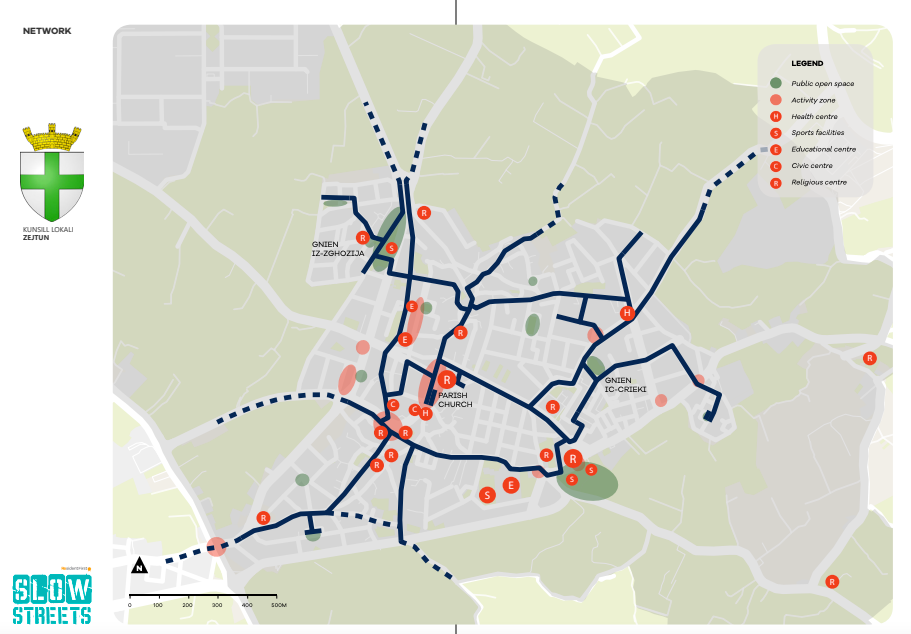
The plan for Żejtun, seen by Lovin Malta, envisages a total of 26 road interventions for Żejtun, with concepts such as creating ‘play streets’ where children can play and people can gather, re-routing traffic to main roads, and creating more pedestrian crossings.
Fava said that while the local council might decide to implement some changes, it agrees with the plan in principle.
Here are some of the proposed implementations.
1. Triq Bon Kunsill and Misraħ Karlu Diacono
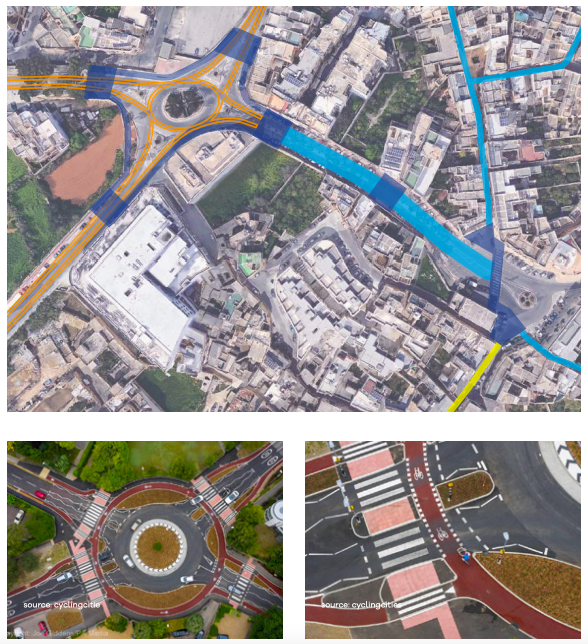
Reorganising the space up and around the roundabout to include more pedestrian crossings, giving them more importance by means of bright and colourful floor markings. A safer transition for cyclists to cross the roundabout could also be organised.
The existing crossing at Misraħ Karlu Diacono could be strengthened using similar striking markings and the space in front of the chapel could be dedicated to pedestrians.
Signage will emphasise slow car speed (30km), signal that they must share the road with cyclists, indicate all crossing points and alert high pedestrian and cycling activity with the Slow Streets Network branding.
2. Triq San Pawl and Il-Madonna Tal-Ħniena

This road could be closed off to all private cars, except residents, with all other traffic moved to the main roads.
A speed limit of 20km/h could be introduced, with pedestrian crossings established at all intersections, preferably using bright paint markings so that they become clearly visible for approaching vehicles.
3. Misraħ Kan. Giov. Vella
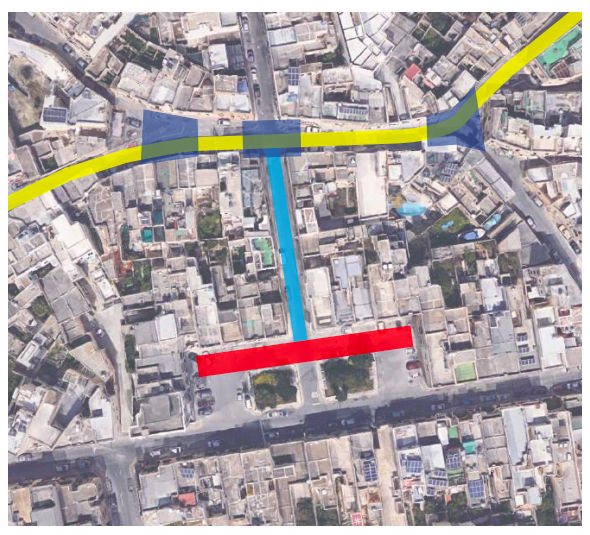
This road has been envisaged as a play street during designated times and/or days as traffic is already low and localised.
“Play streets are a global movement to promote health and neighborliness in the public area, they give young and old a chance to play, be active on their street, whilst also building community and encouraging active citizenship,” the proposal reads.
“As well as these immediate benefits, they can help to bring about a longer-term culture change, where streets are safer and friendlier at all times.”
4. Triq il-Labour

This road has been highlighted as an important cycling connection to multiple towns as part of a nationwide network for cycling.
Seeing as the road space doesn’t allow the addition of designated cycle lanes, the plan suggests that cars should share the road with bicycles by means of an evident roadside and road signage.
5. Dawret Ħal Tmin, Misraħ Ħal Tmin
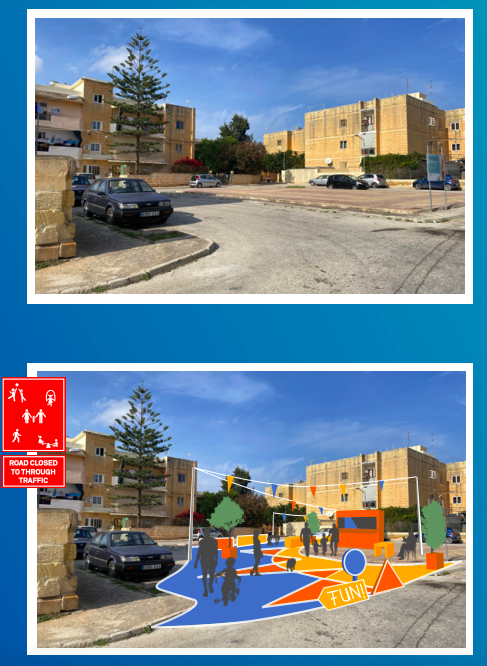
The plan proposes limiting the car speed to 20km/h, with signage communicating that drivers must share the roads with pedestrians and cyclists. A strong pedestrian crossing will be added at the intersection with Triq Id-Daħla Ta’ San Tumas.
Meanwhile, the adjacent Misraħ Ħal Tmin square will be used as a play street during designated times and/or days, serving the residential area around it.

The LCA’s plan proposes phasing in the initiative step by step, starting by testing out the most straightforward interventions and constantly monitoring the process.
Emergency and service vehicles will be exempt, as will buses – acting as an incentive for more people to use public transport.
It also makes it clear that local councils should collaborate with residents, government entities and NGOs at all stages of the project, noting that the most successful plans for change often come from the residents themselves, as they centre on their daily needs.
However, the future vision is for Slow Streets to incentivise larger scale projects that could give back high quality urban public space to residents.
“For these future projects, partnerships, active resident involvement and participatory design will be essential,” the plan reads.
Would you like to see these kinds of projects implemented in Malta?